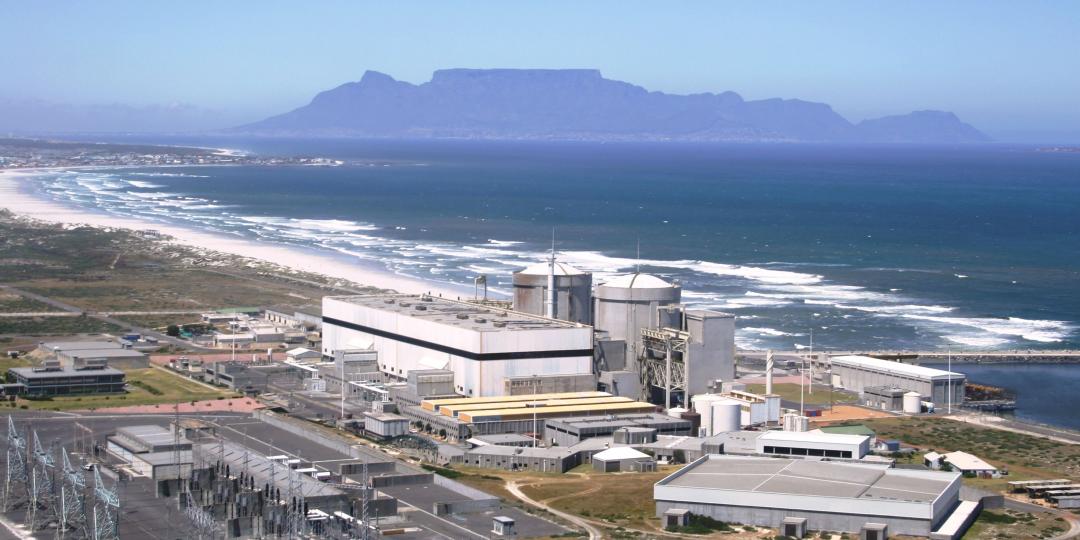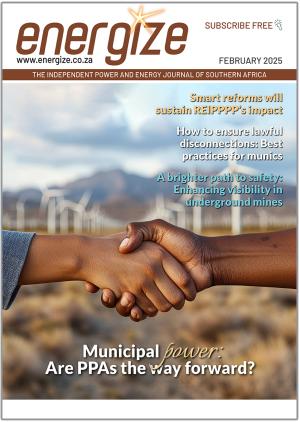The National Nuclear Regulator (NNR) has announced public hearings relating to an Eskom application to licence the Thyspunt site in the Eastern Cape for a new nuclear power station. The hearings are set to take place on 25 and 26 August 2021 in St. Francis Bay and Jeffreys Bay respectively.
Some background
Thyspunt lies 80 km east of Gqeberha (formally known as Port Elizabeth), in between St. Francis Bay and Oyster Bay. The site was one of three proposed by Eskom for a new nuclear build in 2008, the others being Duynefontein (next to Koeberg outside Cape Town) and Bantamsklip (near Hermanus in the southern Cape).

At the time, an environmental impact assessment (EIA) found that the Thyspunt site was the least risky. However, in a surprise move the minister for the environment approved the project in 2017 but named Duynefontein for the build. This decision was appealed, and four years later, no decision on that appeal has been made.
“Things are not adding up,” says Organisation Undoing Tax Abuse (OUTA) Energy Advisor, Liz McDaid. “The EIA resulted in approval of the [next to] Koeberg site, which has been appealed. That appeal has not yet been decided on, nor has the National Energy Regulator of South Africa (Nersa) made a decision on the determination for new nuclear power. The NNR appears to have made its own decision and has jumped the gun on this process.”
Affected parties respond
The executive director of the Southern African Faith Communities’ Environment Institute’s (SAFCEI) Francesca de Gasparis says, “It is unclear what exactly is happening with Thyspunt currently. There is not much information available in the public domain, even though this is a national issue.

“Last we heard was that government’s aspirations for Thyspunt were abandoned in 2017. This then led to a push for Duynefontein, but this was also opposed by local communities since neither location is good for a nuclear energy power plant. The reality is, there is no location suitable for this outdated, failed technology. Nuclear energy is not only expensive and dangerous but as the court victory in the illegal R1-trillion nuclear deal has exposed, is prone to a severe lack of ethical governance issues and increased risk of corruption.
“With Koeberg having management issues and one reactor down, a question we have is whether government is deliberately shifting its attention elsewhere,” says de Gasparis.
“Government views nuclear energy as 'green' energy; a view not shared by the majority of South Africans,” says University of South Africa’s Political Sciences Professor, Jo-Ansie van Wyk. “No nuclear energy expansion can be enforced without a transparent and fair public education effort. These public hearings are badly timed as communities are desperate for socio-economic relief, hope and opportunities. Deflection is not development. What these communities need most, is efficient and clean government at local level, not false promises of a nuclear dawn.”
“This “consultation” comes at a time in which there has been no public notification and zero public debate about the location of new nuclear reactors at Thyspunt after it seemed clear that this idea had previously been abandoned,” says environmental sociologist and long-standing observer of the nuclear industry, Dr David Fig.
“And it is being proposed during a pandemic at venues difficult for the affected general public to reach. This is yet another example of the government’s basic dishonesty about nuclear. Instead of focusing on what is going wrong at Koeberg – manager suspended, cracks in the structure and delays in starting up of a unit – the state now intends to foist this unmanageable and over-costly technology on the unwitting people of the Eastern Cape,” says Dr Fig.
“It is disappointing to see money and time being spent on pursuing nuclear power for the Thyspunt site after the government had stated that there was no money to fund a new nuclear build,” says Koeberg Alert Alliance spokesperson, Peter Becker, who has recently been appointed to the board of the NNR.
Richard Halsey, a researcher at Project 90 by 2030 says, “The Minister responsible for energy, Gwede Mantashe, has set in motion a process to add 2500 MW of capacity from nuclear energy to our power supply. Extensive evidence by leading lights such as the Energy Systems Research Group (ESRG) and the Council for Scientific and Industrial Research (CSIR) explains why this 2500 MW new nuclear build is not suitable for South Africa at this time. “So why are we having public hearings on where to build nuclear power, when it is clear that it is not required and there are better options?” says Halsey.
Attempted distraction from Koeberg?
“The existing Koeberg plant is more of a concern, where Reactor 1 was down since January due to an increasing leak rate of a steam generator within the containment building,” says Becker. “The plant manager Velaphi Ntuli was then suspended on 4 June 2021 and two weeks later Reactor 1 was running again. Was the leak actually fixed in that short period or did the new acting plant manager override Ntuli’s concerns?”
“We call for transparency and that Ntuli be allowed to speak publicly about his decision not to restart the reactor,” says Becker.
Becker believes that the revived interest in the Thyspunt site is just a distraction from more pressing issues. “We should be worrying about the safety of the existing plant at Koeberg, especially as it approaches the end of its design lifetime,” he says.
Problems at Koeberg: Cracks, leaks, suspended manager
In 2021 the media reported on safety and reliability issues at Koeberg after Eskom was forced by a PAIA request to release a report into corrosion damage to the containment buildings. While half of the contents were blacked out, the report describes accelerating corrosion at an unexpected rate, which amongst other things has caused a 110 m crack to form all the way around the containment building for unit 2.
Related story: Eskom's response to reports regarding Koeberg's cracks raises more questions
Decisions to be taken shortly: Koeberg life extension
Eskom has stated its intention to apply to the NNR to extend the life of the Koeberg plant 20 years beyond its designed lifetime and has already spent billions of rand on new steam generators based on the assumption that the NNR will approve the extension.
Safety standards were different in the 1970s when Koeberg was built, and modern reactor designs are required to have several additional safety features. “There are several issues that need to be addressed before the Koeberg plant can be considered safe by modern standards, and that will come with a significant cost”, says Becker.
“Much like an old car, there comes a time when it is just not worth repairing it to the point where it is as safe as a new car. It was unwise to spend money refurbishing the plant before finding out what would have to be done to obtain a licence to extend its life.
“We are probably going to have load shedding for the next two or three years. It will only make the situation worse to repeatedly shut down Koeberg for refurbishing work over that time,” says Becker.
There are also cost implications, according to Becker. “Eskom has said the refurbishing of Koeberg to allow the life extension would cost R20-billion. Based on other large Eskom projects, this is likely to double or even triple,” he says.
Nuclear not the way forward
Eskom has ballooning debt and cannot afford to pay for a new nuclear plant. The economics of refurbishing Koeberg has also been questioned, especially as it would need to be shut down to do the work, making load shedding worse over the next three years.
“Renewable energy in the form of wind and solar has been cheaper for utility scale electricity generation in South Africa since 2016,” says Halsey. “Battery storage prices are dropping even faster than renewables and global storage deployment increased 62% in 2020 alone. This combination is the way of the future for powering our country, nuclear is an unnecessary, costly and risky distraction.”
Contact Peter Becker, Koeberg Alert Alliance, Tel 083 444-2083, peter@koebergalert.org















